Jim Chalmers risks his own John McEnroe moment
Tuesday’s budget is the toughest test for Jim Chalmers in his almost two years as federal custodian in the Albanese government. Can he hold the line?
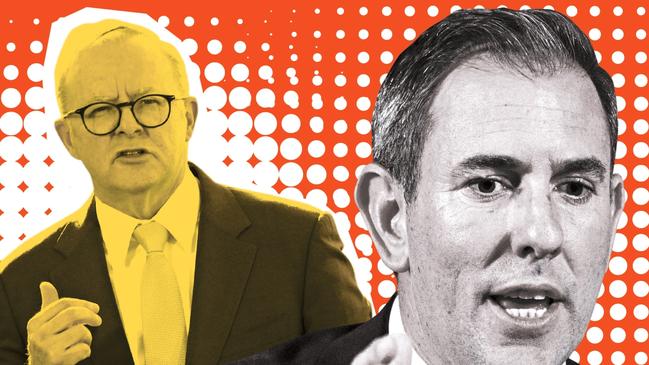
Inflation has been above the Reserve Bank’s mandated 2 to 3 per cent range since September 2021 and on the bank’s latest reckoning will return to within the target band in the second half of next year and the desired “midpoint” in 2026.
That’s a long time to be failing. As former RBA governor Philip Lowe said last November, central banks the world over were facing a severe test. “Many countries now are saying that inflation won’t get back to target until the end of 2025,” he told a central banking conference in Hong Kong. “That’ll be four years with inflation above target … and if central banks allow that timeline to be pushed out even further into 2026, the community will rightly say, ‘Are they serious?’ ”
Faced with making the big calls in Tuesday’s budget, Jim Chalmers risks his own John McEnroe moment. Unless he delivers a fiscal statement that plays its part in helping to squeeze demand in the economy to reduce inflation, the nation’s most pressing policy challenge, voters, financial markets and members of the RBA board can only conclude: “Treasurer, you cannot be serious.”
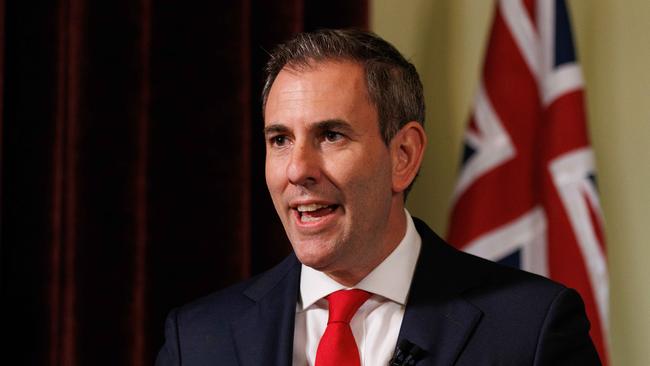
This is the toughest test for Chalmers in his almost two years as federal custodian in the Albanese government. During months of deliberations, ministers will have pushed the Treasurer to the brink in their demands on the public purse. Last year Chalmers delivered the first budget surplus in 15 years. Over the past two budgets, Canberra’s spending has increased by a cumulative 5 per cent in real terms – while the RBA has been trying to slow the economy through 13 hikes in official interest rates since May 2022.
Tuesday’s budget must be neutral, at the very least, but ideally slightly tighter, because if inflation, which has fallen from a peak of 7.8 per cent in December 2022 to 3.6 per cent in March, rears up the fallout will be calamitous: higher interest rates, more business failures, rising unemployment and the “hard landing” of a recession.
For inflation to fall back to target over a “reasonable time” as Lowe’s successor at the RBA, Michele Bullock, has described the challenge, Chalmers must hold the line, not expand the capital’s footprint, otherwise the equation is simple: interest rates stay higher for longer.
The Treasurer, however, has rejected calls by experienced budget watchers for Canberra, and the moochers in the provinces, to show spending restraint. Independent economist Chris Richardson says people forget that an economy’s supply is relatively fixed, at least in the short term.
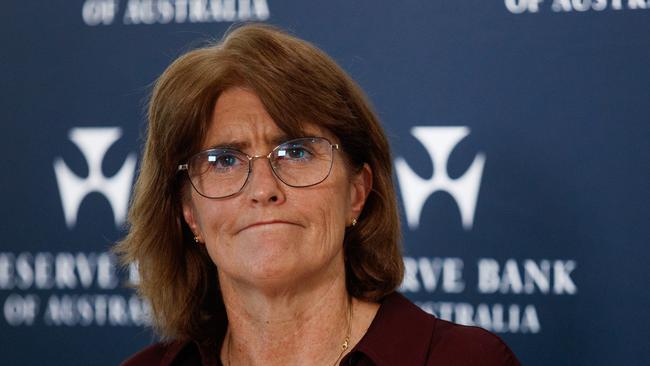
“So the only game in town is demand,” he tells Inquirer. “So who’s doing what to demand? Well, the ‘good news’ is that more and more families are throwing in the towel and spending less. But governments are all jumping in, hoping the gamble pays off.”
Queensland Premier Steven Miles jumped the gun. Every household in the state will receive a $1000 credit on their power bills in July, which will cost taxpayers $2.5bn. This week’s Victorian budget pumps more than $3bn into the state’s economy, including a fresh round of payments to parents with kids in public schools, as the state grapples with a debt as a proportion of state product higher than in the doom years of the early 1990s; the interest bill will cost taxpayers $26m a day.
On Thursday, West Australian Treasurer Rita Saffioti said her state will have what Victorians and Queenslanders are having: a bonus for school kids (previously announced) and an energy credit (arriving in summer, just before an election in March) plus dessert! WA is spending $42bn on a Big Build over four years.
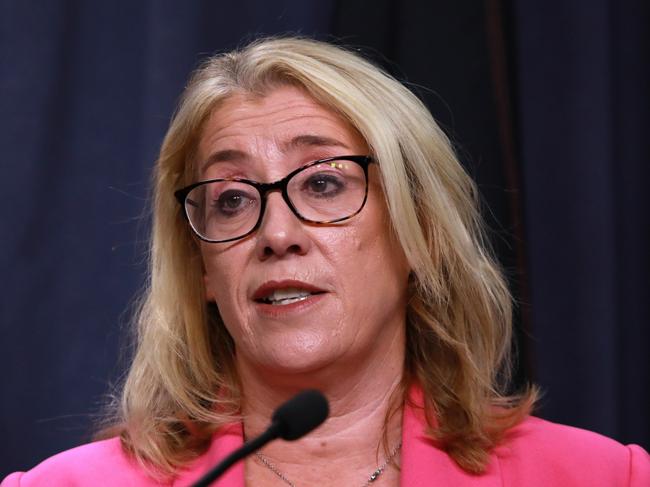
“Everyone wants some political credit,” Richardson says of the conga line of politicians doling out pre-election cost-of-living relief. “The feds will likely do something in Tuesday’s budget on electricity prices. Everyone is complicating life for everyone else in a big game of chicken. Only those families that are hurting are helping.”
Families with mortgages are paying a record share of their disposable income to meet their borrowing costs; their measured buyer sentiment is down to recessionary lows while their actual living costs are up by twice the rate of the consumer price index (which does not include mortgage interest costs).
Richardson says the hope is that demand from those mortgaged families will somehow outweigh the pumped-up demand from governments. Yet some economists say Chalmers has to turn the policy dial to a “contractionary” setting.
It’s a wickedly difficult balancing act, made more precarious by the stimulus loaded into the tax system. Labor’s rejigged stage three tax cuts, worth around $23bn in the first year, will provide a boost to household incomes from July 1, which the Treasurer argues will ease cost-of-living pressures. Fiscal experts say this and any other new measures should be offset with cuts to targeted low-quality programs or via a blunt efficiency dividend across the capital’s bureaucracy.
KPMG chief economist Brendan Rynne argues “what we really need now is for the federal budget not to add to aggregate demand – it should be neutral or, if possible, even slightly contractionary”.
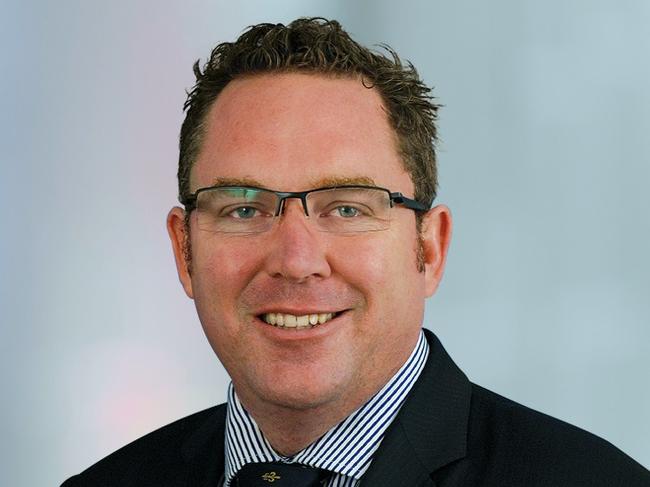
“A budget in expansion mode will risk inflation taking off, with fiscal policy pressing even harder on the accelerator, while monetary policy is pushing on the brakes,” Rynne said after the RBA’s monetary policy decision.
“Already government spending as a total of GDP is around 27 per cent compared to the pre-Covid average of around 24 per cent. This is too high.”
Chalmers dismissed such calls for spending restraint, declaring it was “not the time for scorched-earth austerity”. “It would not be wise when people are doing it tough and when the economy is soft for us to slash and burn in this budget,” the Treasurer said, totally distorting the nature of the mainstream critique.
Rynne tells Inquirer there’s a “misalignment of economic management”, between the public sector’s loose fiscal policies and the RBA’s monetary settings. He says the government sector mistakenly believes the central bank “can do all the heavy lifting” in the inflation fight. Some, such as Rynne, criticised the RBA’s rate hike in November as overkill, but the board has been vindicated by the subsequent data, which showed an acceleration in quarterly inflation, and homegrown inflation (or the non-tradables measure of the CPI) at 5 per cent.
Inflation is not an equal opportunity destroyer, nor is the blunt tool that is used by the RBA to suppress it. On the other side of the deal, higher interest rates boost the income of retirees and savers, who struggled for years to get decent returns on their nest eggs.
Bullock is worried about the risks to inflation from loose budgeting, stagnant productivity and soaring petrol prices. After the board held official interest rates at 4.35 per cent on Tuesday, the RBA governor said she was “alert and vigilant” to the risk of inflation staying too high for too long.
The central bank’s economists predicted prices growth would rise to 3.8 per cent across the three months to June – the first increase since the end of 2022.
Bullock said petrol prices were a big part of the rise, but put rate rises back on the agenda because of the strength of services inflation, including insurance, rents, education and medicines.
“If services inflation really, really gets stuck, at a level which is inconsistent with our target band, then we’re going to have to act,” Bullock said.
The RBA estimates government spending across all tiers, including public service wages and capital works, is growing at 3.2 per cent in the year to June, compared with annual consumer spending that essentially has been flat for a year (even with population growth of around 660,000, with a record migrant inflow of 550,000). Foreigners, public spending, exports and business investment are keeping the economy above water.
While the federal budget outcome should be an underlying cash surplus for the year to the end of June, it’s probably going to be only half of the $22bn recorded the previous year. Beyond that, Chalmers has been softening up budget tragics and the public for the hard reality of deficits over the coming four years, as spending keeps rising (because of forever costs) and the revenue bonanza of recent years returns to more modest growth.
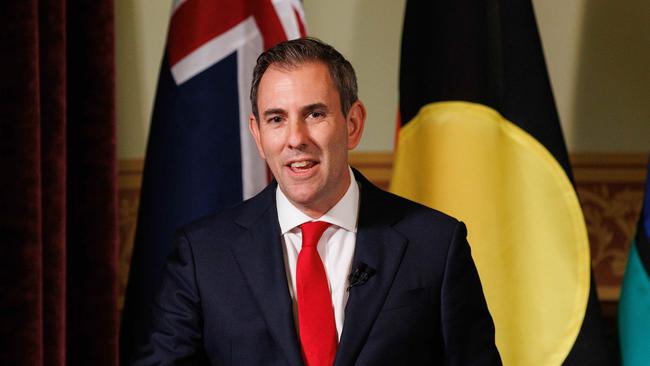
But it’s the slippage in provincial finances that is of most concern for those who set interest rates. Asked at her press conference on Tuesday if the federal and state budgets risked undermining the RBA’s inflation fighting efforts, Bullock said treasurers across the country were aware of the risk of adding to price pressures.
“I’m conscious that there are budgets coming up,” she said. “The point I would make is that the federal Treasurer, Jim Chalmers, says publicly – and he says to me in private – that he does have inflation in his mind while he is thinking about the budget. And I think they are all conscious that they want to help us beat inflation so they don’t want to try and add to inflationary pressures. We’ll just have to see what the budget comes out like and then we can think about how that might impact our forecast.
“And as I said, the signs, at least by what’s being said, is that inflation is front of mind.”
Chalmers speaks clearly, often bluntly, and almost always says the things the public needs to hear. Yet this week’s endorsement of state and territory government cash splashes and energy bill credits sent the wrong signal. “These cost-of-living pressures are acute, they are still substantial, we need all shoulders to the wheel,” Chalmers said, backing in the boost to household incomes.
But those freebies just get recycled back as higher demand. “All it does is create a transfer,” says Rynne, who adds that while low-income earners should be looked after, higher public spending is simply adding a “shock to the economic system”. Along with exports, the public sector has kept the economy growing. The KPMG chief economist is now even more concerned about the level of federal and state spending after this week’s Victorian budget. He fears it’s a bad omen.
“The Victorian government hasn’t understood the need to pare back spending to take pressure off inflation,” says Rynne. “You look through the budget and, department by department, you see non-core ‘own spending’ rise above their ’23-24 budget levels.”
Rynne says Victorian Premier Jacinta Allan and Treasurer Tim Pallas have “missed the point completely on where they need to spend and where they don’t need to”. “My fear is that the same philosophy will feed into the federal budget,” he says.
“There’s been a universal loosening of the purse strings across the public sector at a time when what you are needing is a co-ordination in restraint from both monetary policy and fiscal policy.”
Experts are divided on whether Bullock and her board have lost credibility in the inflation fight. Some question why the governor has not been more explicit in pointing out the dangers from strong public spending, in the way global bodies have called for belt-tightening to help central banks. Well, that’s probably a mix of politics, diplomacy and trust in the new Chalmers-Bullock era, which began last September; more disruption is afoot from institutional and legislative changes
Bullock knows well that if inflation remains at large, workers will chase higher wages, to an extent that it makes the nation’s employers uncompetitive given productivity has been stagnant, by and large, for a decade. It’s a vicious cycle, where community expectations – that is, the calculations of future inflation for both companies and employers – become untethered from the RBA’s mission. More pain, no gain.
Consumers understand inflation, of course, but not the technical niceties when experts speak of “disinflation”, which means a deceleration in the rate of inflation. More germane are actual price levels. Petrol prices go up and down due to factors way beyond our shores. Ditto with fresh food, based on the seasons and crop yields. But some things, such as insurance, council rates, school fees, medicine and dining out are never going back to their price levels before the Big Inflation.
That’s partly a problem for Bullock, because it affects inflation expectations, but it’s a mammoth problem for the Albanese government. Cost of living has been the most salient issue for voters for some time. It’s why Chalmers, and other governments, are risking poking the inflation bear with handouts and rebates. At the very least, Rynne says, we need an inflation circuit-breaker in this budget and a nominal federal spending target (say 25 per cent of GDP) to reimpose discipline.
Remember Kevin07? “I am saying loud and clear that this sort of reckless spending must stop,” Kevin Rudd said in his campaign launch. Another Queenslander has the chance to actually deliver that on Tuesday night without slashing, burning, scorching or torching. His credibility is on the line and so is Australia’s direction over the rest of Chalmers’ “defining decade”.
“We’re a very wealthy nation,” Rynne says. “But governments can’t do everything for everyone because we’re not that wealthy.”


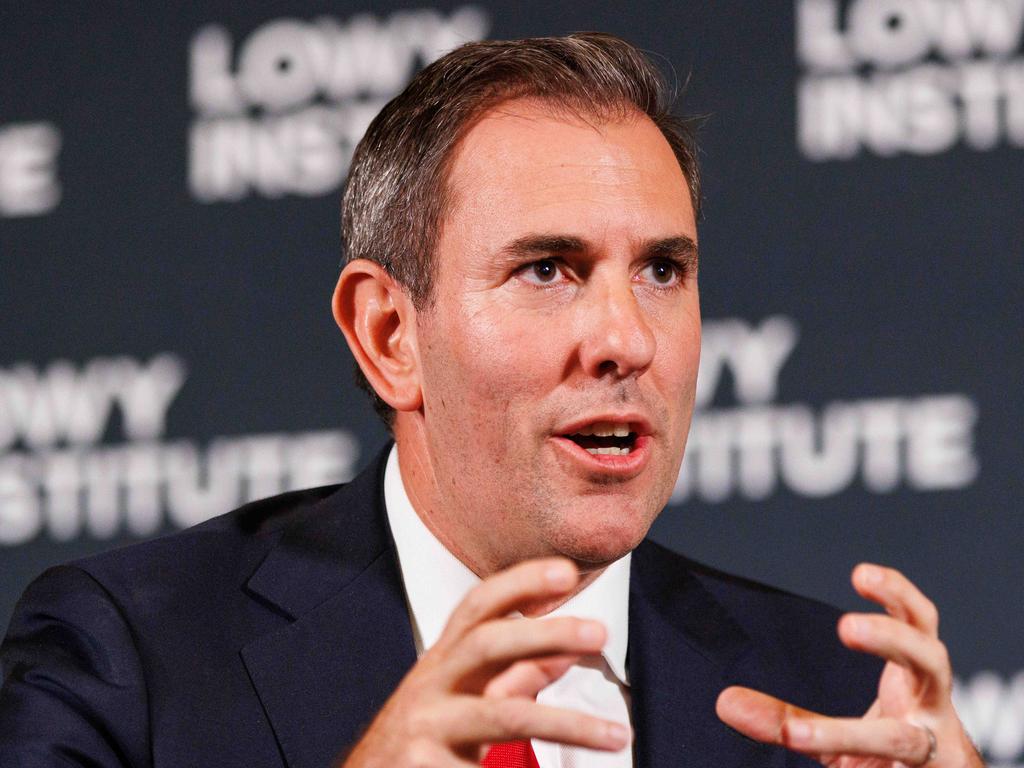
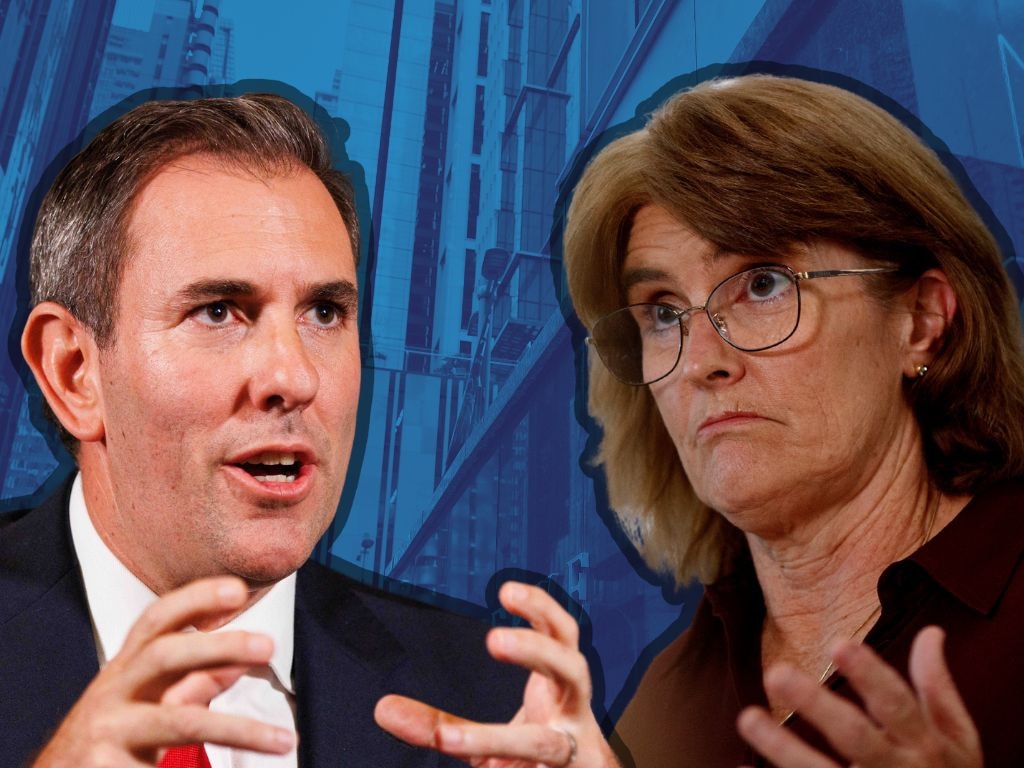

Australia remains in the grip of high inflation. The longer it has a hold on us, the more damage this menace is doing to the community, while eating away at the collective credibility of policymakers whose job it is to bring prices growth under control.